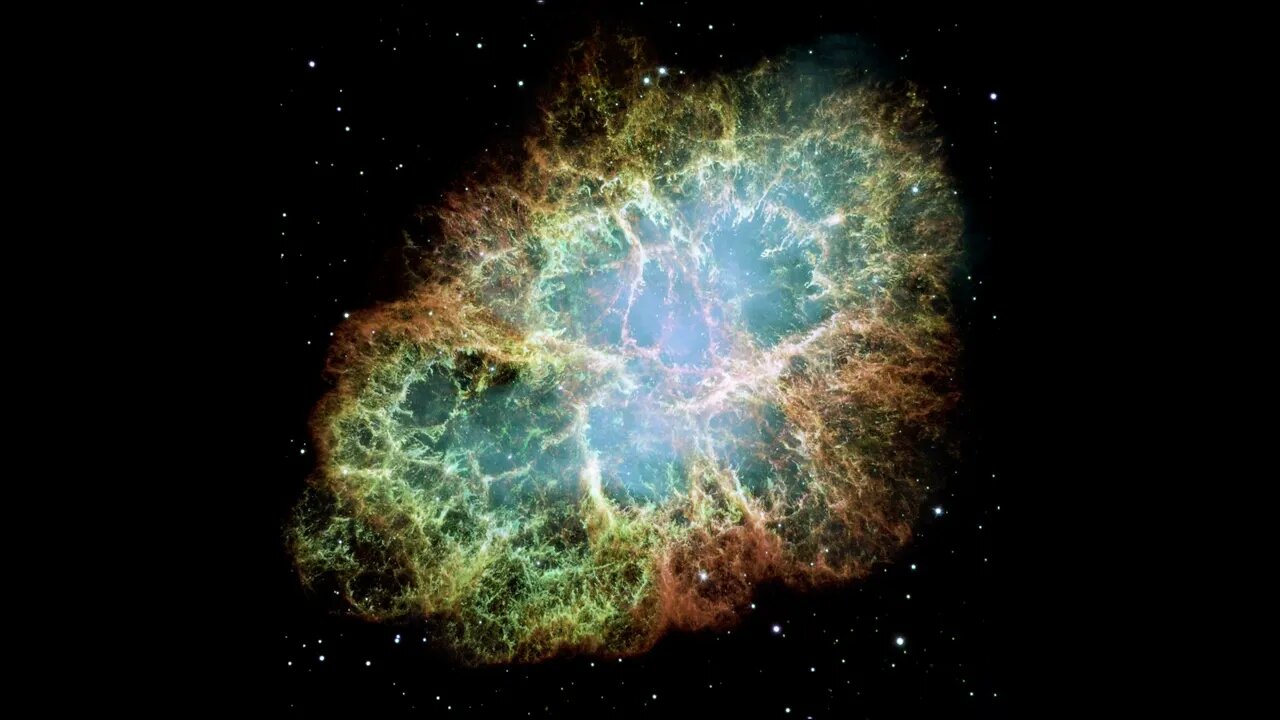Premium Only Content

A Star Explosion That Changed History: The Crab Nebula in 3D #short
Join us on a 3D journey into the Crab Nebula, one of the most amazing sights in the universe! This six-light-year-wide remnant of a star explosion is powered by a pulsar that spins 30 times a second. In this video, we will reveal its secrets using one of the largest images ever taken by NASA's Hubble Space Telescope.
The Crab Nebula was first seen by ancient astronomers in 1054 and later observed by Lord Rosse in 1844. It is composed of different elements that glow in different colors: blue for oxygen, green for sulfur, and red for oxygen again. The pulsar at the center emits beams of radiation that create the blue glow around it.
The Crab Nebula is the remnant of a star that was observed to explode in 1054 A.D. by Chinese, Japanese and Native American astronomers¹³. It is located 6,500 light years away from Earth²³ in the constellation of Taurus, and is a strong source of wavelengths from radio waves through gamma ray waves¹. A light year is the distance light travels in one year -- equivalent to about 6 trillion miles.
The star that exploded was a massive one, about 10 times more massive than our Sun. The explosion was so bright that it could be seen during daytime for several weeks. The explosion left behind a dense core called a neutron star, which has a diameter of only 28 to 30 kilometers but weighs as much as our Sun³. This neutron star spins rapidly and emits beams of radiation along its magnetic poles. These beams sweep across the sky like a lighthouse and create pulses of light that we can detect on Earth. This is why the neutron star is also called a pulsar.
The pulsar is surrounded by a cloud of gas and dust that was ejected during the explosion. This cloud forms the visible part of the Crab Nebula that we see today. The cloud has a diameter of about 11 light years and is expanding at a speed of about 1,500 kilometers per second². The cloud contains different elements that were created inside the star before it exploded, such as hydrogen, helium, oxygen and sulfur. These elements glow in different colors depending on their temperature and ionization state.
The pulsar also produces a powerful wind of particles that interacts with the surrounding cloud and creates shock waves. These shock waves accelerate some particles to near-light speeds and make them emit synchrotron radiation. This radiation creates the blue glow around the pulsar that we see in Hubble's image.
The Crab Nebula is one of the most studied objects in astronomy because it provides insights into stellar evolution, supernova explosions, pulsars and cosmic rays. It also serves as a calibration source for many telescopes because its brightness and spectrum are well known.
STYX AI processed this image in 3D, bringing out the intricate details of the Crab Nebula. The image was assembled from 24 individual exposures taken in October 1999, January 2000, and December 2000. Watch this video to learn more about this fascinating object.
Credits
NASA, ESA, J. Hester and A. Loll (Arizona State University)
Processed by STYX AI
crabnebula #hubble #pulsar #supernova #space #astronomy #science #3d #styxai #nasa
-
 7:22:52
7:22:52
SpartakusLIVE
13 hours agoSaturday SPARTOON Solos to Start || Duos w/ StevieT Later
75.7K2 -
 28:40
28:40
SLS - Street League Skateboarding
8 days agoTOP MOMENTS IN WOMEN’S SLS HISTORY! ALL THE 9’s - Rayssa Leal, Leticia Bufoni, Chloe Covell & more…
35.9K11 -
 23:00
23:00
Exploring With Nug
22 hours ago $28.88 earnedHis Truck Was Found Crashed in the Woods… But He’s Gone!
115K11 -
 27:09
27:09
MYLUNCHBREAK CHANNEL PAGE
22 hours agoDilmun: Where Life Never Ends
87.3K51 -
 2:58:32
2:58:32
Slightly Offensive
15 hours ago $89.80 earnedHas Trump FAILED US? The ABSOLUTE STATE of The Right Wing | Guest: Nick Fuentes
128K157 -
 1:37:05
1:37:05
AlaskanBallistics
11 hours ago $2.90 earnedI Love This Gun PodCast #16
42.7K3 -
 2:59:26
2:59:26
Twins Pod
20 hours agoEMERGENCY PODCAST WITH ANDREW TATE! - Twins Pod - Special Episode - Andrew Tate
193K207 -
 2:52:01
2:52:01
Jewels Jones Live ®
2 days agoTRUMP SECURES BORDER | A Political Rendezvous - Ep. 113
102K37 -
 25:02
25:02
marcushouse
1 day ago $47.53 earnedStarship Just Exploded 💥 What Went Wrong This Time?!
198K131 -
 12:00
12:00
Silver Dragons
1 day agoBullion Dealer Reveals Best Silver to Buy With $1,000
126K12